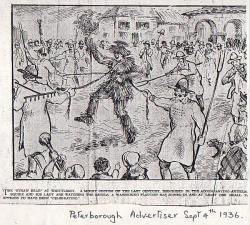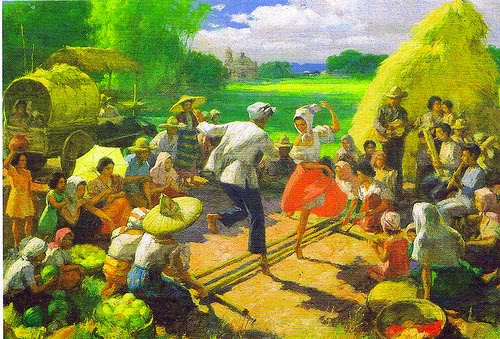In the village of Siddington in Cheshire in the shadow of the monolithic radio telescopes of Jodrell Bank, lives a gentleman with an unusual hobby.
Raymond Rush makes corn dollies, and at Harvest Festival time decorates the local church with over 1,000 of these sinister pagan relics.

In his workshop next to an old hand made sign advertising Beautiful Kittens- 20p each! is a poster asking ‘What is a corn dolly? What is the magic of a corn dolly? How can you make a corn dolly? Raymond Rush tells all!’ to advertise a talk he gave to the Sandbach Methodist Church Discussion Group in 1980.
These are interesting questions, and without access to the archives of the Sandbach Methodist Church Discussion Group which actually I don’t have, we must try and find out for ourselves. Also, I wonder if any of the Beautiful Kittens are still available?
“Dolly” may be a corruption of the word “idol” or derive from the Greek work eidolon (apparition): that thing which represents something else.

Before Christianization, in traditional pagan culture it was believed that the spirit of the grain – in the shape of a man, woman or animal – lived in the fields and that the harvest rendered it homeless.
Until then, whatever form the spirit took, typically children were warned not to go into the fields amongst the crops, or to pick the cornflowers and poppies which grew there with threats such as “The Big Dog sits in the corn”, “The Corn-Cat will come and get you” or “The Old Rye-Woman will tear your head off!”
As the harvest progressed, the spirit would move from place to place, finally ending up in the last unharvested sheaf. Customs varied from village to village, and from country to country, but they were always variations on capturing the grain spirit from the sheaf.

Motifs which keep popping up are contests to be the person who severed the final stalk of the crop- (as this was not an enviable position, they typically included the blindfolded throwing of sickles at the final sheaf) – the ill treatment of the person chosen in this way (often including the throwing of sickles at the “winner”) to show dominance over the spirit which they were now felt to represent, and the creation of creatures or puppets of straw or whatever the crop had been, and the worship of these.
Sidenote: Sickle-related deaths and injuries have decreased significantly in Europe since these customs have become less popular.

Some notable rituals:
Being compelled to wear a black face mask, dress as the opposite sex, drink twice as much as everyone else at the harvest feast, and to eat only from the cream-ladle whilst being teased by the company.
Being wrapped in a bundle of straw, referred to as the Corn-Puppet, carried around the field, then soaked in water or thrown into a stream. Water is usually used as a rain charm for future crops.
Being throttled with a straw garland, called the Old Man or Old Woman, then crowned with flowers and straws and paraded around the village.
Swathed in straw, called the Oat-Man or Oat-Woman and compelled to pay a ransom of cakes to the harvesters.
Being called the Wheat-Pig or Wheat-Sow, forced to carry the final sheaf around until placing it surreptitiously into the field of a neighbour who has not yet finished harvesting, thereby transferring the harvest pig-spirit to their land, BUT if caught by the neighbour doing so, to be beaten and kept in the pigsty until escape is possible and another attempt can be made to lose the sheaf.

The other unfortunates liable for mistreatment during harvest were strangers to the area, as they were considered to possibly be a human embodiment of the harvest spirit.

They were exposed to treatments such as:
Being chased, caught, then bitten in the forehead by each harvester, each of whom cried as they did so- “You hold the key of the field!” meaning that the spirit is now trapped within them. They would then be covered with leaves and not allowed to go until they paid the harvesters drink money.
They might also be asked “Shall I teach you the flail-dance?” and if they replied “Yes” – having the arms of the threshing-flail put around their neck as if they were a sheaf of corn, and being squeezed until they could not breathe.
Strangers were also treated to ceremonial scythe-sharpening, poetical addresses, sickle-throwing and much garlanding with straw, being referred to as Oat-Goats, Pea-Pugs, or Straw men or women, then being held to ransom.

This may seem harsh, but those were harsh times. Compared to the Guayaquil Indians of Ecuador who fertilized the fields with human blood and the hearts of men, or the Cañar people who sacrificed a hundred children to the harvest every year in the 16th century, these rural brutalities seem fairly mild.

As we pulled up to All Saints Church in Siddington village, we were laughing about the old ways and saying it would still be pretty stupid to visit an isolated rural community at harvest time, just to be on the safe side… when we realized we were in the process of doing exactly that, and the laughter died.
The friendly pumpkins and smiling bean and flower face at the front door reassured us a little (perhaps that’s how they lure victims in, though?), and we went into the spectacular interior, where corn dollies of every possible kind hung from the walls, ceilings and light fittings in extraordinary profusion.
Quite an eyeful, especially when you bear in mind that this is the work of one man only. Raymond Rush has been doing this for decades and is something of a local celebrity.
After admiring the dollies (which included a number of simple pentagrams), some extremely odd hand-worked tapestry hassocks, and the Healing Hands Pyramid box on the alter where I was able to charge my hands with healing energy for later use, we descended the hill to explore the disused dairy and barn where the Corn Dolly Workshop was located.
This workshop contained many practical and beautiful objects as well as dollies, books and honey for sale.
Click here for a quick video tour of both locations with some appropriate music.
A witches broom, some very sinister poppets, twee sculptures of mice marked “Not For Sale”, swathes of cobwebs, some real, and some artificially woven from silver threads.
Homemade cards, family photographs, certificates of excellence in Folk Art and Straw Work, school notices going back 40 years, and some felt bats hanging from the ceiling completed the charming, dusty confusion. Not a place you would wish to lose a contact lens, that’s for sure.
We were overjoyed to be able to load ourselves with dollies – simply leaving the correct money in the honesty box before having a quick play with the friendly barn cats who populated the area and driving back to London.
Whether these decorations contain the spirit of the harvests past or were created with more sinister intent by this seemingly benevolent character is not known to me. Typically, creating an effigy of something is to attempt control over it using the principles of Sympathetic Magic.
These images of straw and corn could be easily turned to various uses according to the wishes of the maker or the owner, so whether you have a Lovers Knot, The Mare, a Nek Dolly or a Glory Knot, treat it carefully and do bear in mind it may be more than it appears.

And – this is very important – if anyone ever asks you “Shall I teach you the flail-dance?” then say NO.
“Although the new anthropomorphic gods may satisfy the religious wants of the more developed intelligences, the backwards members of the community will cling by preference to the old animistic notions.” – The Golden Bough – Sir James Frazer
Last year I foraged for fruits in Epping Forest, and laid down a collection of liqueurs-to-be in the cupboard under the stairs. Simply combining fruits/sugar/plain alcohol and letting it develop – in this case for a full year – is like a science experiment which yields some dense, complex potable results. (Click here to to see that)
Harvest Festival
1 shot Courvoisier brandy
1/2 shot home-made blackberry liqueur
Apple juice (ideally from foraged or home-grown apples)
1 dash of crabapple or rosehip liqueur

Combine in a chilled shaker with ice, then strain into a chilled glass. Garnish with a spare berry or apple slice.
Even if you don’t have forest access, you can still find berries and fruits in gardens, parks, or waste ground which other people are embarrassed to harvest in case they are viewed as scavengers. Don’t let that trouble you.
I always carry a foldaway scavenging, sorry I mean foraging bag with me, and this year we gathered over 5lb of blackberries in Epping which we made into bramble jelly with some crab apples from pathside bushes at Wanstead Flats.
We also made a vast quantity of chutney with tomatoes from a friends garden who was away for a few days and foolishly, sorry trustingly gave us access to their home.
You don’t have to be a farmer to have a harvest, and throwing sickles at each other is optional.





















































